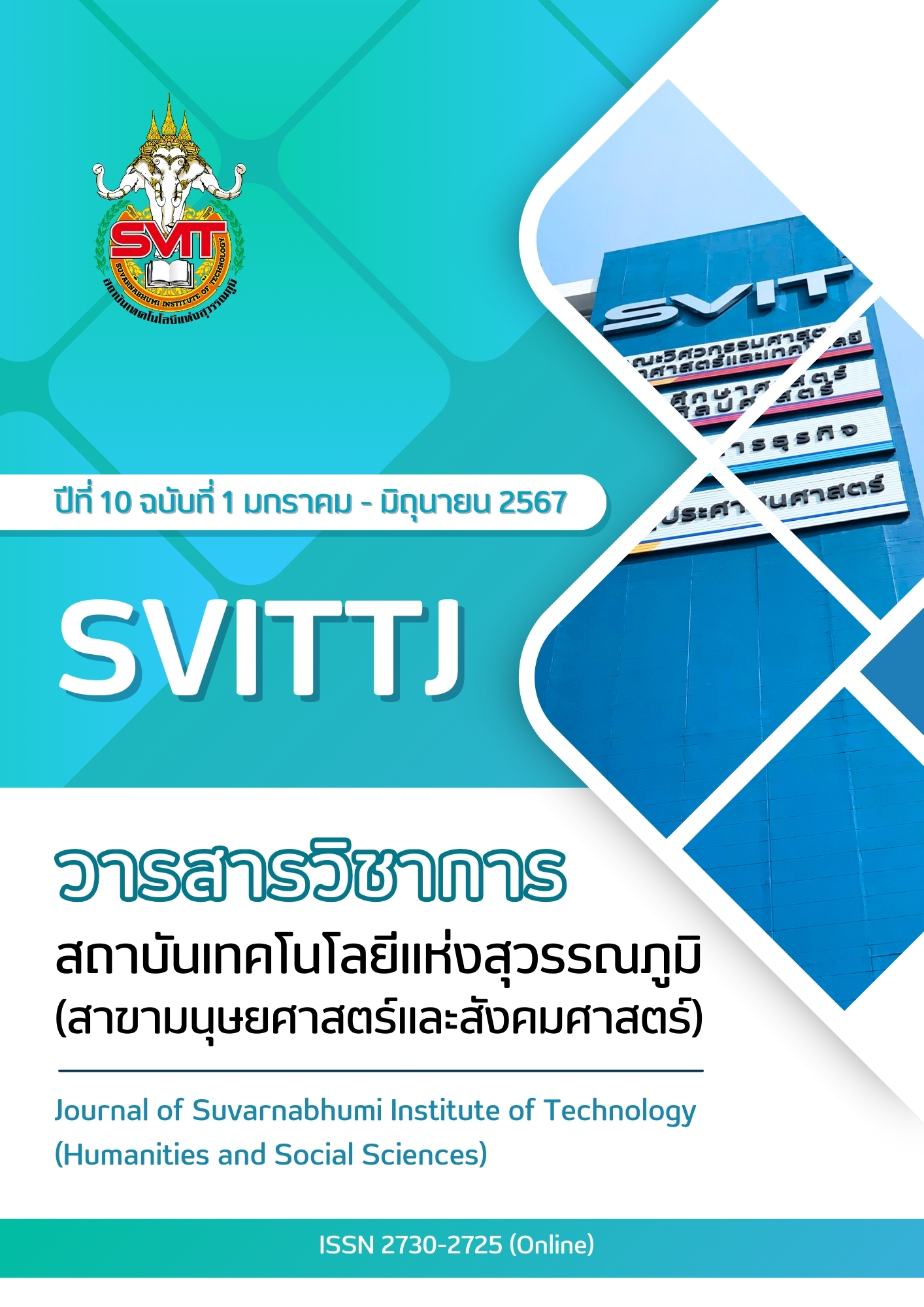INVESTIGATING FACTORS IN THE TECHNOLOGY-ORGANIZATION-ENVIRONMENT (TOE) MODEL THAT PROMOTE SMALL AND MEDIUM-SIZED BUSINESSES (SMES) IN THE FOOD INDUSTRY TO ADOPT E-COMMERCE
Keywords:
E-Commerce, Food Industry, Small and Medium-Sized Businesses (SMEs, Technology-Organization-Environment (TOE) ModelAbstract
E-commerce as a medium for online transactions by business actors can increase the productivity of small to medium-scale food businesses (SMEs). This work is research on determinants adopted by e-commerce food small to medium-sized businesses (SMEs) based on the technology-organization-environment model. The results of data collection by using Smart PLS with the results of the technological indicators, perceived benefit and perceived compatibility have a significant affect the technology in terms of adoption of e-commerce by small to medium-sized food businesses (SMEs). Organizational indicators, firm size and organization readiness have a significant affect the organization in terms of adoption of e-commerce by small to medium-sized food businesses (SMEs), but culture has not significant. Moreover, environmental indicators, customer pressure, competitor and external support have a significant affect the environment in terms of adoption of e-commerce by small to medium-sized food businesses (SMEs). The data that has been generated can be used by the small to medium-scale food business management agency in Bangkok, Thailand to formulate strategies for increasing the productivity of food industries.
References
Ade Onny Siagian, Ninuk Riesmiyantiningtias and Rizky Amalia. (2022). Planning Model and Questionnaire for Measuring MSME Performance through (TOE) Technology Organization Environment: Indonesia. Journal of Computer Networks, Architecture, and High-Performance Computing, 4(1), 13-19.
Achrol, R. S., & Kotler, P. (1999). Marketing in the Network Economy. Journal of Marketing, 63(4_suppl1), 146-163. https://doi.org/10.1177/00222429990634s114
Aspasia Vlahvei, Ourania Notta, Evita Grigoriou. (2013).Establishing a Strong Brand Identity Through a Website: The Case of Greek Food SMEs. Procedia Economics and Finance, 5(2013), 771-778.
Atchara, M. (2017). The competitive advantage of agricultural processing industry SMEs entrepreneurs in upper northern region, Thailand. Journal of Yala Rajabhat University, 12, 13-26.
Baker.J. (2012). The Technology-Organization-Environment Framework. Information Systems Theory: Explaining and Predicting Our Digital Societ. Springer, 1, 231-245.
Chong, H.J. (2008) Measuring performance of small-and-medium sized enterprises: the grounded theory approach. Journal of Public and Affair, 2(1), 1-11.
Cooper, D R and P S Schindler. (2001). Business Research Methods. (7th ed). Singapore: The McGraw-Hill.
Das, S. & Das. K.K. (2012). Factors Influencing the Information Technology Adoption of Micro, Small and Medium Enterprises (MSME): An Empirical Study. Research and Application, 2(3).
Girish.S.,B. (2014). Determinants of E-Commerce in Indian MSME Sector: A Conceptual Research Model Based on TOE Framework. Universal Journal of Management, 3, 105-115.
Hassan. N., R. (2021). E-commerce Adoption TOE Model by SMEs in Jordan. Multicultural Education, 7(3).
Kotelnikov, V. & Asia-Pacific Development Information Programme (APDIP) (2007). Small and medium enterprises and ICT. Retrieved from: https://hdl.handle.net/20.500.12870/5285.
Lila Setiyani & Yeny Rostiani. (2021). Analysis of E-Commerce Adoption by SMEs Using the Technology-Organization-Environment (TOE) Model: A Case Study in Karawang, Indonesia. International Journal Of Science, Technology and Management, 2(4), 1113-1132. https://doi.org/10.46729/ijstm.v2i4.246.
Malhotra, N K. (1999). Marketing Research: An Applied Orientation. (3rded). London: Prentice Hall International.
MacGregor, R.C. & Vrazalic, L. (2005). A basic model of electronic commerce adoption barriers: A study of regional small businesses in Sweden and Australia. Journal of Small Business and Enterprise Development, 12(4). 510-527. https://doi.org/10.1108/14626000510628199
Missra. S. C. & Mondal. A (2011). Identification of a Company’s Suitability for the Adoption of Cloud Computing and Modeling Its Corresponding Return on Investment. Mathematical and Computer Modelling, 53.
Palmer, J. (2002). Environmental education in the 21st century: Theory, practice, progress and promise. Routledge.
Panji, M., Kamalian, M., Asgari Marnani, J. & Jafari, M.K. (2014). Analysing seismic convex topographies by a half-plane time-domain BEM. Geophysical Journal International, 197,(1), 591–607. https://doi.org/10.1093/gji/ggu012
Rakibul, H. & Richard, B. (2017). Adoption of B2B e-Commerce in Developing Countries: Evidence from Ready Made Garment (RMG) Industry in Bangladesh. Pacific Asia Journal of the Association for Information Systems, 9(1), 55-74.
Rayport. J.F., & Jaworski.B.,J. (2001). E-commerce. MacGrawhill International Edition, Chapter-4, 2001
Rita Rahayu & John Day. (2015). Determinant Factors of E-commerce Adoption by SMEs in Developing Country: Evidence from Indonesia. Social and Behavioral Sciences, 195, 142-150.
Sören Hilbrich. (2021). What is social finance? Definitions by market participants, the EU taxonomy for sustainable activities, and implications for development policy. Discussion Paper, 29. https://doi.org/10.23661/dp29.2021.
Sulaiman Al-Hudhaif. (2011). E-Commerce Adoption Factors in Saudi Arabia. International Journal of Business and Management, 6(9), 122-133.
Yu, S., Jung, C., & Ke, P. (2016, November). Adaptive PQ: Adaptive perceptual quantizer for HEVC main 10 profile-based HDR video coding. In 2016 Visual Communications and Image Processing (VCIP) (pp. 1-4). IEEE.
Zhu. K. & Kraemer KL (2005) Post-adoption variations in usage and value of e-business by organizations: cross-country evidence from the retail industry. Information Systems Research, 16(1), 61–84.
Downloads
Published
Issue
Section
License
Copyright (c) 2024 Suvarnabhumi Institute of Technology

This work is licensed under a Creative Commons Attribution-NonCommercial-NoDerivatives 4.0 International License.
บทความที่ได้รับการตีพิมพ์เป็นลิขสิทธิ์ของวารสารวิชาการ สถาบันเทคโนโลยีแห่งสุวรรณภูมิ
ข้อความที่ปรากฏในบทความแต่ละเรื่องในวารสารวิชาการเล่มนี้เป็นความคิดเห็นส่วนตัวของผู้เขียนแต่ละท่านไม่เกี่ยวข้องกับสถาบันเทคโนโลยีแห่งสุวรรณภูมิ และคณาจารย์ท่านอื่นๆในสถาบันฯ แต่อย่างใด ความรับผิดชอบองค์ประกอบทั้งหมดของบทความแต่ละเรื่องเป็นของผู้เขียนแต่ละท่าน หากมีความผิดพลาดใดๆ ผู้เขียนแต่ละท่านจะรับผิดชอบบทความของตนเองแต่ผู้เดียว





